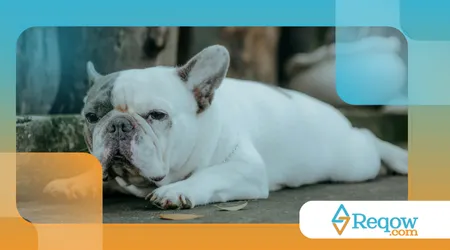Special care for brachycephalic dogs (flat-faced)

You Special care for brachycephalic dogs They are a crucial topic for anyone who loves these charming breeds.
Advertisements
They possess undeniable charm, but their peculiar anatomy demands extra attention and specialized knowledge.
Ignoring these needs can seriously compromise your pet's quality of life.
Understanding the specific characteristics of a flat snout is the first step towards exemplary and conscientious pet ownership.
Why does a short snout require unique attention in the special care of brachycephalic dogs?
The facial conformation of these dogs, such as Pugs, French Bulldogs, and Boxers, is the result of genetic selection that reduced the length of the snout.
Advertisements
This characteristic, while endearing, compacts the upper airways, causing Brachycephalic Canine Airway Obstruction Syndrome (BCAOS).
Breathing, which is a natural and simple act for other dogs, becomes a constant effort for them.
An elongated soft palate, stenotic nares, and hypoplastic trachea present daily challenges. The owner needs to be attentive to subtle signs of respiratory distress.
Noisy breathing and loud snoring are not funny, but rather warning signs.
Read more: How to get your dog used to wearing clothes in winter.
Thermoregulation is dramatically affected by respiratory difficulties. Dogs use panting to exchange heat, and their flat snouts compromise this efficiency. They overheat much faster, turning a normal walk into a potential danger.
How to manage temperature and prevent overheating?
Excessive heat is the number one enemy of a brachycephalic dog.
Avoiding direct sun exposure and strenuous physical activity during the hottest hours of the day is imperative. Hot asphalt and high humidity exacerbate the situation.
Prevention starts with routine. Walks should be short, taken early in the morning or after dark.
It is essential to ensure constant and unrestricted access to fresh, clean water. Cooling mats and vests can offer additional relief on hot days.
Look how interesting: Common mistakes when changing feed
Imagine the situation like a car without an efficient radiator; it will quickly fail under stress.
Similarly, the reduced respiratory system of these dogs is unable to "cool" the body effectively.
What adaptations are needed for the exercise and play routine?
Moderate exercise is important, but it needs adjustments. High-intensity and prolonged exertion should be avoided altogether.
The idea is to stimulate the pet without leading it to exhaustion or hyperthermia.
Quiet play, indoors or in air-conditioned areas, is preferable.
Use toys that stimulate reasoning instead of sudden movements. Monitoring the animal's breathing during activity is key to safety.
Find out more: How to create a walking routine that truly benefits your dog.
If the dog starts breathing too fast or making abnormal sounds, the activity should be stopped immediately.
A good example is replacing a run in the park with a game of hide-and-seek around the house. Physical well-being comes down to intelligent moderation.

Which is the best choice between a collar and a harness for walks?
Choosing the right accessory for a walk is a crucial detail that makes a huge difference. The use of neck collars should be strictly avoided.
Pressure in the throat can worsen existing breathing difficulties.
The harness is undoubtedly the safest and most recommended option. It distributes the pulling force across the animal's chest.
This way, pressure is relieved from the trachea and larynx area. Prioritize well-fitting and comfortable models.
How do diet and weight control influence respiratory health?
Maintaining a healthy body weight is vital, especially for these breeds.
Excess weight adds significant stress to a dog's respiratory and cardiovascular systems. The extra body fat makes breathing even more difficult.
A balanced and controlled diet is essential. High-quality feed, appropriate for the dog's age and activity level, is the starting point.
Consulting a veterinarian to determine the ideal portion size prevents obesity.
Feeding should be adapted to the way they eat, often in a hurried manner. This can lead to aerophagia (swallowing air).
Using slow-feeding or elevated bowls aids digestion and reduces air intake.
What other health conditions should be monitored?
In addition to respiratory problems, brachycephalic dogs are prone to other conditions.
Protruding eyes, or exophthalmos, make them vulnerable to corneal injuries and ulcers. Eye cleaning and protection are essential.
The skin folds on the face, although cute, are an ideal environment for dermatitis.
The accumulation of moisture and debris requires daily cleaning and careful drying. Hygiene is a cornerstone in... Special care for brachycephalic dogs.
Dental problems are also common due to compaction of the dental arch.
A regular brushing routine and dental check-ups are necessary. Veterinary check-ups every six months are recommended.

When is surgery a treatment option?
For severe cases of SOVAB, surgical intervention can be a life-changing solution.
Palatoplasty and correction of stenotic nares aim to increase airflow through the airways. Many pets show immediate improvement.
A study published in 2024 in Veterinary Surgery It has been shown that early surgical correction of stenotic nares in French Bulldog puppies resulted in an 85% reduction in the incidence of severe respiratory crises in adulthood.
This underscores the importance of preventative veterinary assessment.
This decision should be made in consultation with a specialist veterinarian.
Surgery is not a magic cure, but an important tool that improves quality of life. Post-operative care requires... Special care for brachycephalic dogs intensive.
Table of Risks and Management Strategies
| Specific Physical Risk | Warning Symptom | Management Strategy |
| Respiratory Difficulty (SOVAB) | Noisy breathing, choking, bluish lips | Avoid heat/intense exercise; use a chest protector; surgical evaluation. |
| Hyperthermia (Overheating) | Excessive salivation, very red tongue, collapse | Fresh water immediately available; cooling in an air-conditioned environment. |
| Eye Problems | Dry eyes, redness, excessive blinking | Clean your eyes daily; protect them from trauma and dust. |
| Fold Dermatitis | Bad smell, redness, moisture in the folds | Clean and dry skin folds daily. |
Is your love enough for the responsibility they require? What special care is needed for brachycephalic dogs?
Adopting a brachycephalic dog means making a special commitment to its health.
Dedication and knowledge are just as important as the affection offered.
You Special care for brachycephalic dogs They are a continuous act of responsibility. They depend entirely on their guardians to breathe and live well.
The difference lies in the information.
Life with a brachycephalic dog is immensely rewarding. The affectionate temperament and unwavering loyalty of these breeds make the effort worthwhile.
But don't confuse love with neglect. Constant attention, combined with knowledge of their unique needs, guarantees them a full life.
You Special care for brachycephalic dogs They are not a luxury, but a basic necessity.
Prioritizing your pet's respiratory health and overall well-being is the greatest gift a pet owner can give.
Frequently Asked Questions
Why does my French Bulldog snore so much?
Snoring is a sign of partial obstruction of the upper airways, which is common due to the shape of the snout.
Although it may seem normal, it should be monitored by a veterinarian to rule out a serious case of SOVAB.
Is it safe to travel by plane with my Pug?
Most airlines restrict the transport of brachycephalic dogs due to the high risk of respiratory failure and collapse in cargo holds.
If travel is unavoidable, consult your veterinarian about sedation and transport in the cabin (if permitted).
How do I know if my dog is too hot?
The clearest signs are excessive panting, intense salivation, lips or tongue that take on a bluish tint (cyanosis), and difficulty moving.
In severe cases, collapse can occur. This requires immediate intervention and cooling.
